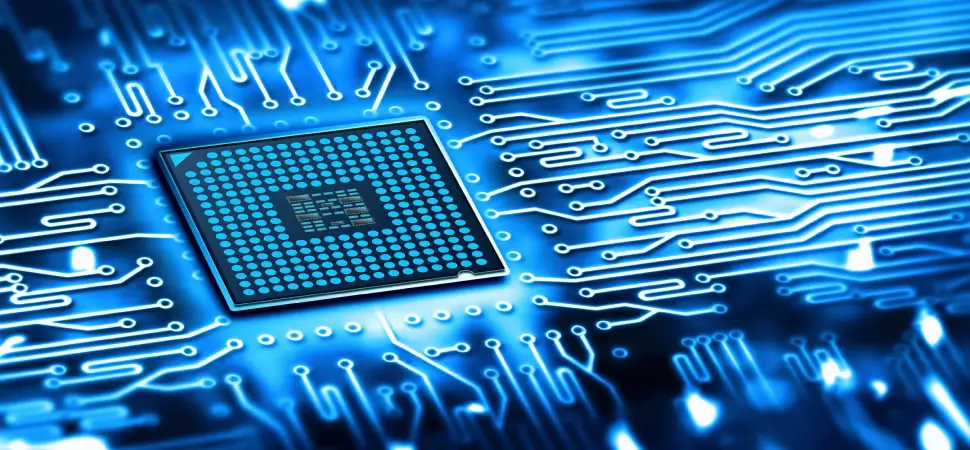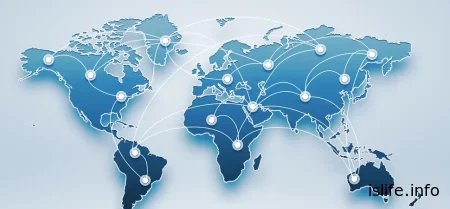Today, microelectronics can rightly be called the leading field in the development of technology. These components are used in many different areas of everyday life, from power generation to digital security and medicine.
Although the microelectronics industry has evolved since the 1980s into a globalised economic and technological sphere with many players spread across the globe. More than ever before, microelectronics is a tool not only for economic but also political influence, used by nations to best secure their sovereignty and economic growth.
↑ World microelectronics leaders
According to data published in 2023 Taiwan accounts for about 46 per cent of the world's semiconductor manufacturing capacity (all processes combined), followed by China (26 per cent), South Korea (12 per cent), the US (6 per cent) and Japan (2 per cent). As a result of the massive investment by China and the US in developing their own microelectronics industries, Taiwan and South Korea's share of global manufacturing capacity will decline in the coming years. TrendForce analysts predict that by 2027, Taiwan's share could fall to 41 per cent and South Korea's to 10 per cent.
But when looking more specifically at advanced microelectronics, Taiwan is still in the lead. According to statistics, in 2023, Taiwan's share of global advanced manufacturing was 68 per cent, followed by the US (12 per cent), South Korea (11 per cent) and China (8 per cent). By 2027, Taiwan is projected by TrendForce to maintain a solid 60 per cent share in this area, while the US share will rise to 17 per cent. Japan, back in the global semiconductor race, could account for 4% of advanced manufacturing capacity in as little as three years.
The global semiconductor market in its current form has been shaped over 30-40 years. Each country or continent is key in certain aspects: advanced technology generations for Taiwan and Korea, rare earth metals for China, tooling and development of complex integrated circuits, control of social media and the Internet for the US, advanced lithography for Europe.
Thus, production chains are extremely tightly linked - each major player needs each other, and a component or electronic product produced from beginning to end in one country simply does not exist. For example, the development and production of a smartphone involves multiple border crossings when considering the path of its various components.
The healthcare crisis as well as high levels of political instability in recent years have shown that one missing component can bring production lines to a halt. This is exactly what we have seen since 2020, when the increase in demand for components due to accelerated digitalisation was amplified by the Covid-19 crisis. This amplification has led to a major crisis, especially in the automotive sector, with semiconductor shortages caused by the disorganisation of global supply chains and logistics due to the pandemic.
↑ Semiconductors: between a technological race and a battle for sovereignty
Semiconductors are now considered the ‘gold’ of the digital age and are at the centre of geopolitical issues and technological sovereignty. Semiconductors and microelectronics are ubiquitous in all modern electronic devices, from phones and computers to household appliances and cars, making them one of the most important resources of our time.
The field of microelectronics is a perfect illustration of the technological race that governments are trying to win. However, as important and strategic as it is for governments, the microelectronics industry is one of the most globalised in the world.
In fact, the various players in the industry are scattered to all four corners of the globe, so that no single government today has complete sovereignty over the entire process of producing an electronic device, from the collection of raw materials to its final manufacture.
↑ Conclusion
In conclusion, it can be said that the world microelectronics plays a key role in maintaining modern technology, on which almost every sphere of our lives depends. Despite the tremendous achievements in this field, the industry faces many challenges related to globalisation of supply chains, semiconductor shortages and geopolitical tensions. With increasing digitalisation and dependence on semiconductor technology, it is important that countries and regions continue to invest in their manufacturing capabilities and develop strategic partnerships to ensure stability and technological independence. Only through coordinated efforts at the international level will it be possible to meet the challenges and ensure the sustainable development of the microelectronics industry in the future.



